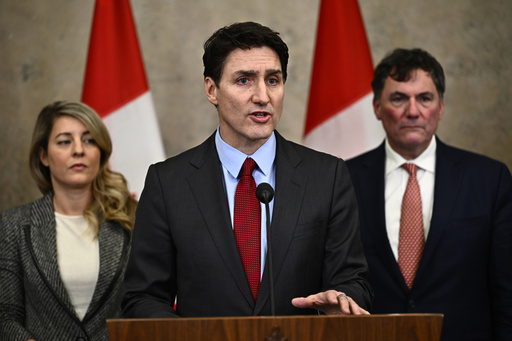President Donald Trump’s initiative to implement tariffs on imports from Mexico, Canada, and China is partly focused on addressing the illegal influx of fentanyl into the United States, a substance linked to approximately 70,000 overdose deaths every year.
On Monday, Mexico agreed to deploy 10,000 troops to its border with the U.S. as part of a negotiation with Trump that would delay these tariffs for a month, while also halting any retaliatory tariffs from Mexico. Shortly after, Canada also reached an agreement with Trump, postponing potential trade conflicts and committing to additional actions against fentanyl trafficking.
China, however, has not indicated any significant changes in its approach towards fentanyl trafficking into the U.S., stating that it would respond to any U.S. tariffs with economic retaliation.
The key question arises: What roles do Mexico, Canada, and China play in the fentanyl crisis in the U.S., and what measures can their governments take to address this issue?
Fentanyl primarily originates from Chinese manufacturers, where the essential chemicals are produced and supplied to pharmaceutical companies for legitimate pain medications. However, these chemicals are also procured by Mexican drug cartels like Sinaloa and Jalisco, which then synthesize the opioid in clandestine laboratories and smuggle it into the United States, primarily through official border crossings in California and Arizona. The potency of fentanyl, which is 50 times stronger than heroin, combined with its odorless nature, makes it particularly difficult for authorities to detect and intercept shipments.
While Canada also produces fentanyl, its contribution to the U.S. drug trade is much lower compared to that of Mexico. During the last fiscal year, U.S. customs officials seized about 43 pounds (19.5 kilograms) of fentanyl at the Canadian border, in stark contrast to the 21,100 pounds (approximately 9,570 kilograms) seized at the Mexican border.
Notably, fentanyl seizures in the U.S. increased significantly—sometimes by tenfold—under President Joe Biden’s administration, a rise that might point to enhanced detection capabilities.
What developments occurred following Trump’s tariff threats? In December, Mexico announced the confiscation of over a ton of fentanyl pills, marking it as the largest seizure of synthetic opioids in Mexican history. This was remarkable considering the notable decline in fentanyl seizures in Mexico earlier in 2024.
Under the leadership of President Claudia Sheinbaum, who took office in October, Mexican security forces seem to have adopted a more aggressive approach compared to those under her predecessor, President Andrés Manuel López Obrador, who had previously dismissed the notion that fentanyl was produced in Mexico.
In response to the tariff concerns, Mexico promised to quickly send 10,000 National Guard personnel to the border to combat drug trafficking, with the U.S. also agreeing to take steps to help curb the flow of firearms into Mexico, as conveyed by both Trump and Sheinbaum on social media.
In Canada, Prime Minister Justin Trudeau emphasized a recent investment of $1.3 billion geared towards enhancing border security, including tools for chemical detection and a new task force focusing on overseeing precursor chemicals. Following Trump’s initial tariff threats, Trudeau expressed strong opposition but ultimately reached an agreement with Trump to postpone tariffs for a month.
Trudeau also announced plans to appoint a fentanyl czar, classify Mexican cartels as terrorist organizations, and create a “Canada-U.S. Joint Strike Force” aimed at tackling fentanyl distribution, organized crime, and financial laundering.
China, for its part, has defended its actions against fentanyl trafficking, though it has had a fluctuating cooperative relationship with the U.S. The country does not suffer from a similar fentanyl crisis domestically and consequently does not prioritize this issue as highly, according to Zongyuan Zoe Liu, a senior fellow specializing in China studies.
The difficulty in combating the production and distribution of illegal fentanyl lies in its unique characteristics. Unlike traditional narcotics like heroin or cocaine, fentanyl is synthesized from legal pharmaceutical ingredients, allowing for production in makeshift labs that can be set up quickly. Furthermore, the persistent demand in the U.S. for this highly addictive substance continues to fuel its illicit trade.
Mike Vigil, a former top official from the U.S. Drug Enforcement Administration (DEA), expressed doubts that Mexico’s additional troop presence at the border alone would effectively limit drug trafficking. When fentanyl is produced, it is typically concealed in hidden compartments of vehicles or large cargo trucks; therefore, enhanced detection technologies are essential alongside increased military presence. Vigil also pointed out that effectively addressing the fentanyl dilemma may necessitate broader international cooperation beyond just the U.S. and its immediate neighbors.
“Even if Mexico, Canada, and other countries successfully eliminated the drug trade, as long as there is demand in the U.S., other nations will rise to meet that demand,” he concluded.




